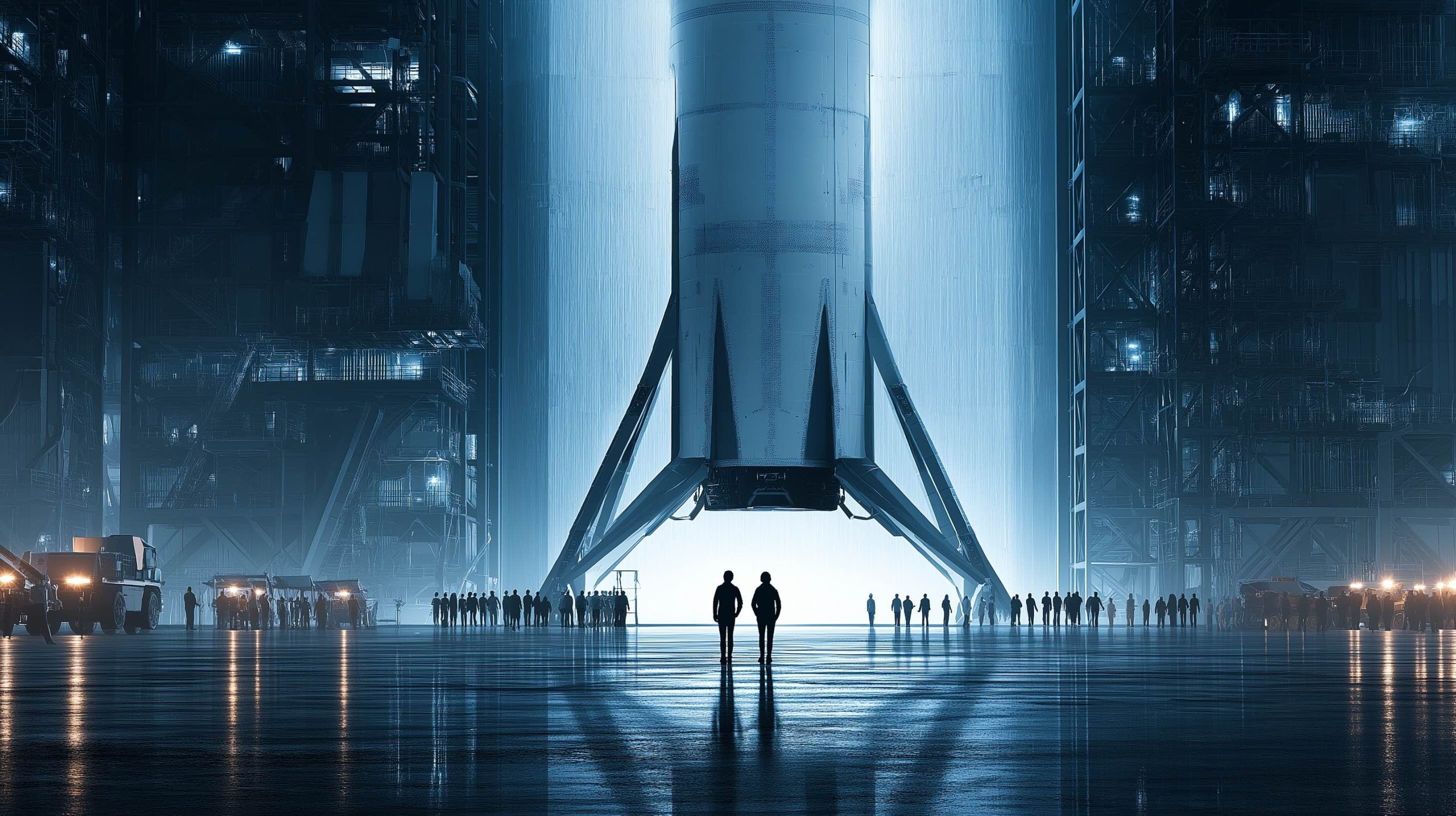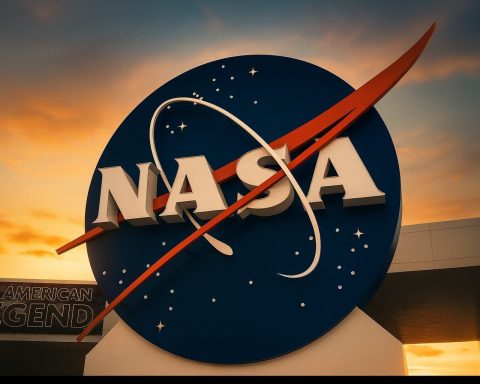- On June 28, SpaceX launched back-to-back Falcon 9s from Cape Canaveral (27 Starlink satellites) and Vandenberg (26 Starlink satellites), with boosters landing on the droneships “A Shortfall of Gravitas” and “Of Course I Still Love You.”
- These two Starlink launches in a single day pushed SpaceX’s active constellation to over 7,900 satellites in orbit.
- SpaceX boosters have been flown as many as 5–8 times each.
- A July 1 doubleheader is planned on the Space Coast with two Falcon 9 missions from Florida within hours of each other.
- A Starship test explosion in Texas scattered debris to Tamaulipas and the Gulf of Mexico, triggering environmental concerns.
- Mexican President Claudia Sheinbaum announced an investigation and potential lawsuits after scientists warned debris could harm wildlife, with over a ton collected on a 25-mile beach.
- SpaceX argues that independent tests show Starship debris does not pose chemical, biological, or toxicological risks and says debris remains SpaceX property, though cleanup is hampered by trespassers.
- Experts note this marks the fourth SpaceX launch failure in about six months, underscoring ongoing safety and reliability challenges for Starship.
- On June 23, a crane collapsed at Starbase in South Texas during debris cleanup, prompting OSHA to open a workplace-safety investigation and drawing criticism over transparency from city officials.
- SpaceX won an $81.6 million U.S. Space Force contract to launch USSF-178 in 2027, the third consecutive NSLS award, while the Space Force explores MILNET/Starshield as a data-relay alternative to its Transport Layer.
Relentless Launch Cadence and Doubleheader Missions
SpaceX’s launch tempo shows no sign of slowing. In one day, the company pulled off back-to-back Falcon 9 launches from opposite U.S. coasts [1]. In the early hours of June 28, a Falcon 9 lifted off from Cape Canaveral, Florida with 27 Starlink internet satellites, followed by another Falcon 9 launch that afternoon from foggy Vandenberg Space Force Base in California carrying 26 more [2]. Both missions were successful, with each rocket’s first-stage booster executing pinpoint landings on ocean droneships – one returning to “A Shortfall of Gravitas” in the Atlantic, the other touching down on “Of Course I Still Love You” in the Pacific [3]. These two Starlink launches in a single day (a rare “doubleheader”) expanded SpaceX’s ever-growing broadband constellation to over 7,900 active satellites in orbit [4], underscoring the firm’s unprecedented launch cadence. SpaceX has made such frequent launches almost routine, leveraging reusable boosters that have flown as many as 5–8 times each [5].
The first stage of a SpaceX Falcon 9 stands safely on a droneship after a Starlink launch, exemplifying the company’s rapid cadence of reusable rocket missions [6].
And there’s more to come: SpaceX plans to ring in July with yet another doubleheader on the Space Coast. Two Falcon 9 missions are scheduled just hours apart on July 1 from Florida’s Cape, prompting local news outlets to advise residents on when to watch the skies. “Depending on weather and cloud cover, a pair of SpaceX Falcon 9 rockets may be visible in Palm Beach County after each liftoff,” the Palm Beach Post reported [7]. This would mark two launches in one day from the same range, a testament to SpaceX’s operational tempo – provided Florida’s summer storms don’t interfere.
Starship Debris Fallout: Mexico’s Legal Threats and Environmental Worries
While SpaceX celebrates launch successes, it faces international fallout from its more experimental Starship program. Last week, SpaceX’s massive Starship rocket suffered a catastrophic explosion during testing in Texas, its second major failure this year [8]. The blast rained rocket debris across the border into Mexico’s Tamaulipas state and the Gulf of Mexico [9]. Mexican officials and scientists are alarmed, citing harm to wildlife and coastal habitats. “Mexican scientists say the wreckage is killing wildlife, including dolphins, sea turtles and fish,” reported the Los Angeles Times [10]. Local environmental groups have collected over a ton of SpaceX debris along a 25-mile stretch of beach, warning that fragments could be ingested by endangered sea turtles and other marine life [11].
Mexico’s President Claudia Sheinbaum has publicly condemned the situation and hinted at legal action. “There is indeed contamination,” she said, noting her government is reviewing “what international laws are being violated” by SpaceX’s cross-border fallout [12]. Sheinbaum ordered an investigation into the environmental and safety impacts of SpaceX’s launches and stated Mexico will file “necessary lawsuits” if needed [13]. This marks a rare international challenge to Elon Musk’s company, as foreign authorities scrutinize the transboundary pollution from rocket explosions.
SpaceX has pushed back on the contamination claims. The company insists that independent lab tests of Starship’s material show it “does not present any chemical, biological or toxicological risks” [14]. SpaceX also stated that all debris remains its property and that its recovery efforts in Mexico have been “hindered by unauthorized parties trespassing on private property,” urging cooperation from local authorities [15]. In fact, SpaceX says it has offered resources to assist with cleanup and wants any recovered fragments returned [16]. The tension is escalating, however – Mexico’s president has a nationalist bent and is under pressure to defend local ecosystems, while SpaceX is trying to contain the diplomatic damage. Experts note this is the fourth SpaceX launch failure in about six months [17] [18], a streak that is putting Musk’s Mars-colonization dreams on a collision course with environmental and regulatory realities on Earth.
Safety Incidents at Starbase: Crane Collapse and OSHA Probe
Down in South Texas at Starbase – SpaceX’s sprawling Starship development site – a recent accident is raising questions about safety and transparency. On June 23, a large construction crane collapsed at the launch complex while clearing wreckage from the latest Starship explosion [19]. The collapse was captured on a live stream video from afar, but crucial details remain unknown. As TechCrunch reported, “a crane collapsed at SpaceX’s South Texas rocket facility…and the company’s newly formed city won’t say if anyone was hurt.” [20] The Starbase site was only officially incorporated as a city in May (populated mostly by SpaceX employees), and its officials – who are SpaceX personnel – have gone radio-silent about the incident. There was no public acknowledgment of the crane failure, and Starbase’s mayor and commissioners ignored multiple requests for comment [21]. This is notable because just days earlier, when a Starship prototype blew up on a test stand, the city did issue a brief statement on social media [22]. But for the crane collapse – which potentially put workers at risk – there’s been no communication at all.
Federal regulators, however, have taken notice. The U.S. Occupational Safety and Health Administration (OSHA) confirmed it is investigating the crane accident as a workplace safety incident [23]. OSHA’s inquiry will determine if any safety regulations were violated and if SpaceX properly reported the event. The lack of transparency from Starbase’s city officials is drawing criticism. Observers point out this is an early test of whether a company-run city (Starbase’s mayor is a SpaceX executive) can be accountable to the public [24]. Thus far, the signs are troubling: SpaceX’s tight-lipped culture seems to have carried over to its municipal governance. “The collapse is one of the first tests of whether Starbase city has an appetite (and will) for transparency,” notes TechCrunch, especially given that the city’s budget is literally funded by SpaceX itself [25]. All eyes will be on OSHA’s findings to see if any safety lapses contributed to the crane failure – and whether SpaceX will be forthcoming or face penalties.
Investor Confidence vs. New Financial Risks
Despite the technical setbacks, investor appetite for SpaceX remains voracious. In fact, some investors are finding creative (and risky) ways to get a piece of SpaceX’s soaring valuation. A fintech platform called Republic recently announced it will offer a tokenized security called rSpaceX, designed to mirror SpaceX’s stock performance for retail investors [26]. However, buyers of this token should beware: you’re not actually buying SpaceX equity. As Republic’s own disclosures make clear, “if you invest, you’re buying a debt instrument…you have no right whatsoever to equity in SpaceX” [27]. The tokens are essentially contingent notes that pay out only if SpaceX has a liquidity event (like an IPO or acquisition) in the next 20 years [28] [29]. Bloomberg’s finance columnist Aaron Brown warns that while such financial engineering “meets a need,” the risks are “substantial” [30] – investors could lose everything if SpaceX never goes public or if Republic itself falters. In short, the rSpaceX tokens are a speculative bet riding on SpaceX’s future valuation, with no shareholder rights or guarantees.
Meanwhile, one billionaire who does own SpaceX stock outright isn’t cashing out anytime soon. Legendary investor Ron Baron, an early backer, told CNBC that he will “never sell SpaceX in his lifetime.” [31] Baron’s firm bought into SpaceX in 2017 when its valuation was a fraction of today’s, and he remains deeply bullish on its long-term prospects. His steadfast conviction – keeping his shares potentially for decades – underscores how strong SpaceX’s growth narrative is in the eyes of veteran investors. Indeed, SpaceX’s valuation has surged to around $150 billion in private markets, and the company has turned profitable on the strength of its launch business and Starlink revenues. While new tokenized schemes target those who missed the boat, early investors like Baron are effectively saying: why sell now when the real payoff lies in SpaceX conquering Mars (and much more) in the future? [32]
Big Government Contracts and a “Starshield” Surprise
SpaceX’s formidable track record is also translating into major government contracts. Last week the U.S. Space Force awarded SpaceX an $81.6 million contract to launch a critical weather satellite in 2027 [33]. The mission, designated USSF-178, will loft the second Weather System Follow-on–Microwave spacecraft – a next-generation military satellite that tracks global ocean winds, hurricanes and more – along with a cluster of experimental smallsats [34]. This win marks SpaceX’s third consecutive competitive award under the National Security Space Launch program [35], solidifying its role as a go-to launch provider for U.S. defense. SpaceX had already launched the first satellite in this weather series in 2024, and the new contract shows the Pentagon’s continued confidence in Falcon 9 (or Falcon Heavy) to deliver key national security payloads cost-effectively.
In fact, SpaceX may play an even larger role in Pentagon space architecture soon. Top Space Force officials revealed they are rethinking a planned military satellite network in favor of partnering with SpaceX’s Starlink/Starshield constellation. Specifically, the Space Force is considering scrapping its “Transport Layer” – a fleet of government-built LEO relay satellites under development by the Space Development Agency – and instead buying data relay services from SpaceX [36]. General Chance Saltzman, the Space Force Chief, told Congress they are examining “a commercial, proliferated, low Earth orbit constellation” as an alternative approach to rapidly transmit data for military operations [37]. Although he didn’t name SpaceX, multiple sources say the plan under review would terminate the Transport Layer program after current satellites are launched and shift to something called “MILNET” operated by SpaceX [38].
MILNET appears to be a codename for a Starlink-derived “Starshield” service: a secure network of up to 480 satellites that SpaceX would run for the Pentagon’s exclusive use [39]. Troops would use special encrypted terminals compatible with Starshield satellites (and standard Starlink) to send and receive battlefield data [40]. Essentially, rather than the military building and flying its own large constellation from scratch, it might piggyback on SpaceX’s existing infrastructure for speed and cost savings. However, this idea is already proving controversial. Some lawmakers worry about sole-sourcing a critical network to SpaceX without competition. At a Senate hearing, Senator Chris Coons pointed out that the planned open-standards Transport Layer “has been replaced by something called MILNET, which is being sole-sourced to SpaceX. No competition, no open architecture, no leveraging a dynamic space ecosystem,” he warned [41]. While Pentagon officials insist no final decision has been made [42], the mere possibility highlights SpaceX’s outsized influence. If approved, it would make SpaceX not just a launch provider but also a direct defense communications operator, further entwining Elon Musk’s enterprise with U.S. national security strategy.
Conclusion
From launching dozens of satellites in a day to grappling with rocket wreckage in protected habitats, SpaceX is a company of extreme highs and lows. The past week’s headlines capture this dichotomy: spectacular technical achievements shadowed by regulatory and safety challenges. On one hand, SpaceX’s ability to launch rockets in rapid succession – and its readiness to take on huge government projects – cements its position at the forefront of aerospace innovation. On the other hand, the Starship program’s stumbles are drawing scrutiny from neighbors and nations who aren’t content to be collateral damage in the race to Mars. As experts have noted, a lot has to happen before Starship is truly operational for Moon or Mars missions [43] [44]. In the meantime, SpaceX must navigate earthly concerns: balancing ambition with accountability. Whether it’s cleaning up debris on a Mexican beach or being transparent about accidents in Texas, SpaceX is learning that moving fast and breaking things can carry steep costs.
One thing is clear: SpaceX remains squarely in the spotlight, for achievements and controversies alike. Industry analysts expect the company will regroup and apply its engineering prowess to fix Starship’s issues – Musk himself is famously unfazed by test failures, viewing them as learning steps. But as SpaceX pushes the envelope, it will be increasingly expected to answer to global stakeholders, not just its investors or fans. With upcoming launches (and possibly explosions) on the horizon, SpaceX’s next moves will be closely watched by the world – from the halls of Congress to the beaches of Tamaulipas – eager to see if this new-space juggernaut can continue to defy gravity and demonstrate responsibility on the ground.
Sources: Recent reporting from Florida Today, Space.com, Los Angeles Times, Reuters, TechCrunch, Bloomberg, CNBC, SpaceNews, Breaking Defense and others [45] [46] [47] [48] [49] [50] [51] [52] provide the factual foundation for this report. Each development highlights a different facet of SpaceX’s multifaceted story – a company simultaneously transforming spaceflight and being forced to answer tough questions about its impacts here on Earth.
References
1. www.space.com, 2. www.space.com, 3. www.space.com, 4. www.space.com, 5. www.space.com, 6. www.space.com, 7. x.com, 8. www.reuters.com, 9. www.latimes.com, 10. www.latimes.com, 11. www.latimes.com, 12. www.reuters.com, 13. www.latimes.com, 14. www.latimes.com, 15. www.reuters.com, 16. www.reuters.com, 17. www.latimes.com, 18. www.latimes.com, 19. techcrunch.com, 20. techcrunch.com, 21. techcrunch.com, 22. techcrunch.com, 23. bsky.app, 24. techcrunch.com, 25. techcrunch.com, 26. www.bloomberg.com, 27. republic.com, 28. republic.com, 29. republic.com, 30. www.bloomberg.com, 31. www.metaculus.com, 32. www.metaculus.com, 33. spacenews.com, 34. spacenews.com, 35. spacenews.com, 36. breakingdefense.com, 37. breakingdefense.com, 38. breakingdefense.com, 39. breakingdefense.com, 40. breakingdefense.com, 41. breakingdefense.com, 42. breakingdefense.com, 43. www.latimes.com, 44. www.latimes.com, 45. www.space.com, 46. www.latimes.com, 47. www.reuters.com, 48. www.latimes.com, 49. techcrunch.com, 50. republic.com, 51. spacenews.com, 52. breakingdefense.com










